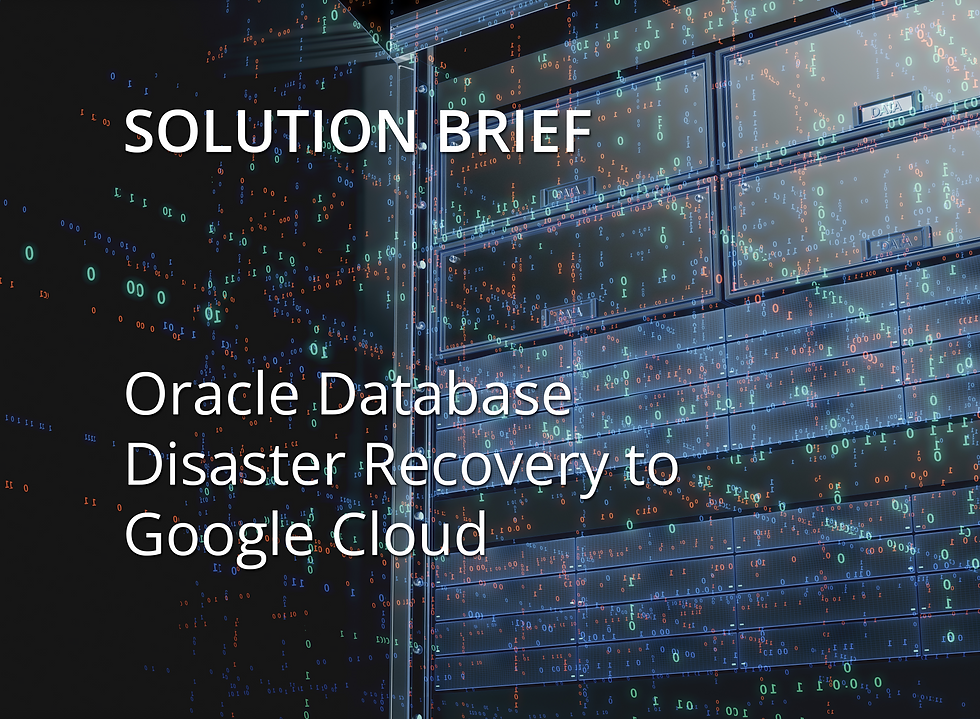Disaster Recovery in OCI Powered by RackWare
- nate6637
- Nov 10
- 3 min read
Enabling Oracle Cloud Infrastructure as a Disaster Recovery Landing Zone for production workloads running anywhere. Protects Physical Servers, Virtual Machines and Containers Running in any data center or any other Cloud.
Ensuring Business Continuity in the Digital Age
In today's digital landscape, ensuring the uninterrupted operation of data centers and cloud services is critical for business continuity. Challenges such as ransomware, cyberattacks, botched third-party software upgrades, natural disasters, and hardware failures, can lead to unexpected outages. An essential component of business continuity planning is having a robust Disaster Recovery (DR) solution that enables rapid failover to a geographically remote and safe location.
Oracle Cloud Infrastructure (OCI), with its rapidly growing global cloud footprint and high-speed interconnects between its cloud partners, presents an excellent option for Disaster Recovery. RackWare’s CloudProtect solution facilitates seamless replication and rapid failover of any server or container from any source into OCI.
Key RackWare Benefits
Easy to deploy
Consistent and Simple workflow
Cloud to Cloud
In Memory DBs and Apps
Central Management in Multicloud env.
Non-disruptive DR testing in Target site
Sophisticated Policy Engine
Handles Enterprise complexities

Disaster Recovery within OCI:
OCI Region to Region
Oracle PCA to OCI
Oracle C3 to OCI
OLVM to OCI
Any combination of Oracle technologies
Datacenter to OCI DR:
Any hypervisor to OCI
Physical to OCI
Other Cloud to OCI DR:
AWS to OCI
Azure to OCI
GCP to OCI
Any Cloud to OCI
Disaster Recovery Best Practices
Combining OCI with RackWare to achieve optimal results
Choose a DR hosting infrastructure in a remote geography: Consider a distance to protect from natural disasters as well as technical outages. Oracle provides many great solutions here, including many OCI Regions, Dedicated Regions, Cloud Compute @Customer, PCA and even OLVM in a data center.
Isolate the DR Site: This helps protect from the spread of viruses and ransomware. Isolation also protects from technical outage chain-reactions.
Deploy all intelligence and automation in the Target DR site: Do not rely on onsite backup or software. Your DR solution should be able to automatically failover and fallback from any source into the DR site, and vice-versa. RackWare CloudProtect is the only solution that can achieve this across all Oracle environments.
Recovery Point Objective and Recovery Time Objective are important, but the primary focus should be on easy, efficient, repeatable bring up to operational levels. If you can't get your application to run properly in short order nothing else matters.
Conduct Frequent DR Tests: Run regular non-disruptive DR tests and be disciplined in consistently updating runbooks and notes.
Train Multiple Teams: Train at least two sets of teams in different geographies to execute the DR functions. If an outage is from a natural disaster it's likely that the local team may not be available or have connectivity to the DR site.
Establish Clear Communication Protocols: Develop a definitive communications process to trigger a DR failover event, preferably with double verification across two remote teams.

Other Considerations – Why RackWare Stands Out
Most reliable Failover and Fallback mechanism
Security and Compliance
Scalable to tens of thousands of servers and containers
Multicloud
Central Management in a Multicloud and multi-data-center environment
Cost effective
Converged Disaster Recovery and Backup in one solution
Extremely easy to deploy
Consume with Universal Credits on



Comments